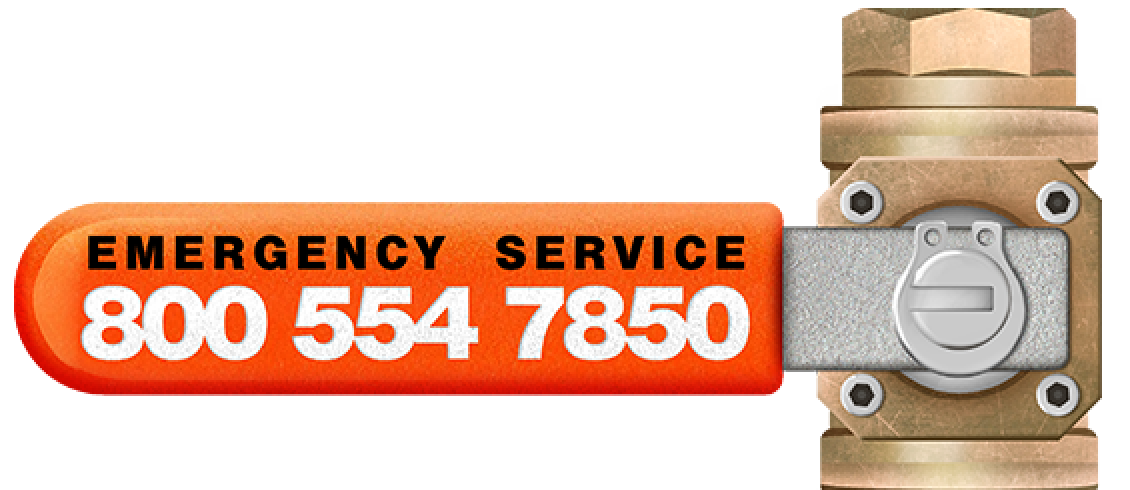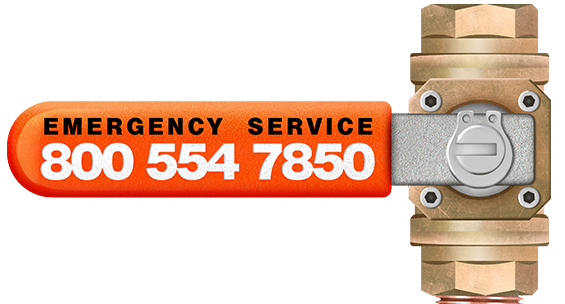
The kitchen can be a wet place and water damage can happen in many ways. You have dishes in the sink, dishes in the dishwasher, and other wet things like pots and pans boiling water, soup, or sauce. There are coffee pots, tea kettles, and water coolers too. Then, of course, there are recipes being supplied with water, milk, wine, and so many other ingredients.
When water gets out of control or remains unseen, it can cause water damage, and that can be costly, smelly, and just an unpleasant thing to resolve. This article will touch on the most obvious, and a few less obvious sources of water and moisture that can be causing unpleasantness. The kitchen should be the source of good smells and deliciousness, not headaches.
Water Leaks Lead to Water Damage in the Kitchen
Water is critical to life, but too much, or in the wrong place, it can cause damage. Small pools of water can be wiped up quickly, and caught early will not cause damage, a broken pipe or hose can flood a whole kitchen and spread to adjacent rooms.
Water damage like that means you’ll probably be tearing up any carpet or wood flooring and replacing it. You’re also going to want to make sure that the whole area is properly dried before you do replace it.
In such a situation you’ll want to call a professional water mitigation specialist like Construemax to make sure the area is fully dried, dried quickly, and can verify that the affected area is at the proper moisture levels to prevent mold growth.
Whether you have homeowners’ insurance coverage for burst pipes or not, you need to resolve this right away because a delay will only make problems harder and more costly to resolve the longer you take.
Here we identify the most common sources of water problems in your kitchen.
Leaks Around Your Sink
The sink is made for water. It’s one of your best friends in the kitchen. It supplies you with necessary water and provides a place to dump the liquids you don’t need or want anymore. As much as we honor the sink and value its features, it is the part of your kitchen with the most possible points of failure. You need to look at all of them:
Above The Counter
- Faucet – Faucets can leak when gaskets, o-rings, or washers get old or are defective. Corrosion or minerals that build up on moving parts of the faucet can also cause problems. Of course, an improperly installed faucet is just trouble waiting to happen. Sometimes it’s not even waiting, it’s just leaking from the start and causing water damage before you notice.
- Sprayer – Like the faucet, internal parts can deteriorate or get mineral deposits and cause trouble. But connections are a common culprit. Kids love the sprayer because it is fun to aim the nozzle wherever and spray. It’s a toy for them – no matter how many times you tell them it is not. Some kids are more gentle, to ensure they don’t get caught. Some are not – and will yank, twist, or tossed it around. This roughness can eventually cause failure. Sometimes at the connections, sometimes in the hose. Depending on how it is damaged, it could be leaking water above the kitchen counter and you see it right away, but sometimes it’s below.
Below The Counter
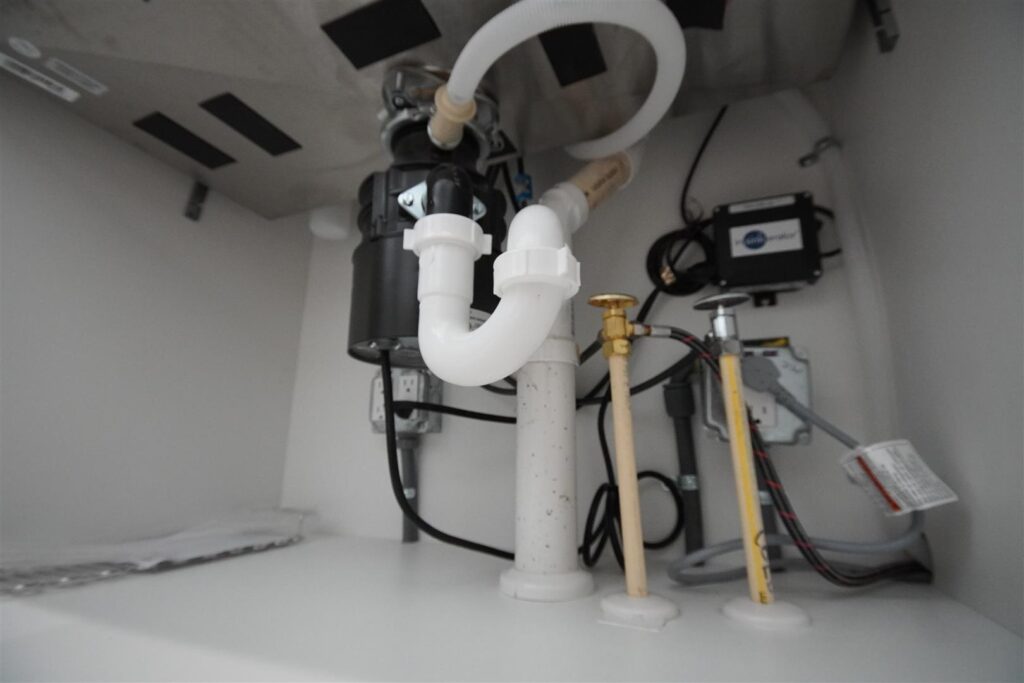
- Water Supply Lines – Usually when your supply lines are connected, if there is a leak or a problem, you’ll know it right away, but sometimes things fail. Different types of pipes and fittings have different life spans. Whether you have copper, brass, steel, or (heaven forbid) lead in an older house, or in a newer or remodeled home with PVC or PEX pipes, you’ll want to check the lines for leaks. Most of Florida doesn’t get freezing weather, but the Panhandle and North Florida can freeze. If the weather stays frozen long enough the water in your pipes can freeze too. Those can compromise the integrity of the connections and cause leaks that are hard to notice, or they can cause the pipe to burst. Either way that water leak, big or small is going to cause water damage that can affect you’re whole kitchen if you don’t resolve it ASAP.
- Drain Pipe – Drain pipes that are broken or have compromised connections are a source of trouble as well. Again, there are a variety of materials that have been used over the years for drains, each with different characteristics. While PVC is less likely to have condensation than steel drain pipes, they aren’t good for hot water. If you’re draining a lot of boiling water from your pot of pasta right off a hot stove, that’s not so good for the PVC. Check those drains under your sink. Make sure the connections are tight and look for moisture. Above all, don’t overcook your pasta; it won’t affect your pipes – but can diminish an otherwise delicious meal.
- Garbage Disposal – The garbage disposal is a marvelous feature of any kitchen. As wonderful a ‘quality of life’ gadget it is, it too can sometimes let you down. It’s annoying when it doesn’t work or stops up, but these devices can also leak. The most common places to experience a leak are where the device connects to the sink, where it connects to the drain, and where the dishwasher drain pipe connects to it. Check them all. If you find leaking, get it fixed, and check for water damage under your kitchen sink in the cabinet.
Dishwasher
Dishwashers are another friend in your kitchen. Some people don’t mind doing dishes. Having a dishwasher that works right just makes life better. But working right means not leaking.
There are basically two ways the dishwasher will leak, through the door and underneath.
Door – When leaking through the door it usually happens because of wear and age, but there are also things the person loading the dishwasher could be doing to cause it to leak too. That would be things such as using too much soap, loading too many dishes, or loading dishes in a way that disrupts the free spraying of water on all the dishes.
Underneath – Hidden leaking from underneath the dishwasher is more problematic in that if it isn’t large amounts of water, it can be leaking for a long time before you even notice. It can be causing damage to your floors or growing mold and you don’t know it. The leaks underneath are usually caused by gasket failure, cracks in hoses, or faulty connections to the water source or the drainage pipes.
Refrigerator
A refrigerator is a most-prized appliance in the kitchen because it holds all kinds of deliciousness as well as providing ice and ice-cold water. Of course, to do that, you need to connect waterlines to the big thing.
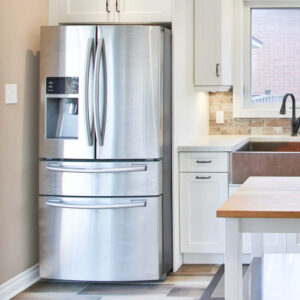
Leaks
Pipes – The most obvious and biggest threat that comes to mind is that your water line is broken in some way. Whether you have a copper connection or plastic tubing they can develop cracks, have failing gaskets, or otherwise fail and cause big messes. Refrigerator water lines have caused whole kitchens and dining rooms to flood, and they flood in a short time as well. If you get that much flooding it’s going to be because you didn’t catch the problem in time and now you have water damage all around your kitchen and who knows where else.
Of course, when you first hook up water lines to your refrigerator or reconnect them, you will want to pay close attention – looking for any signs of water leaking trouble. You also need to pay close attention when you get in the cleaning mood and you move your refrigerator. If the tubing is too short you might unintentionally pull too far and break the line. Water lines have been known to break when pushing the fridge back into place as well, so be careful.
Blocked or leaking water tubes inside – Sometimes the problem is on the inside. If tubing inside your freezer gets frozen it can burst and leak. This can be a tougher one to see, but if you see ice blocks inside that don’t seem to belong, look closer. See if you can find the source of the problem. If it is tubing on the inside, it’s likely behind a door or wall panel or in the hinge area leading to the dispenser in the door and might be a little harder to see. If you can’t see it on the inside, you might have water pooling underneath that you can’t see either.
Non-Leaks
Melting ice – defrosting – Your freezer should be keeping ice frozen, but when it’s not functioning properly it might be cold enough that you don’t notice a problem, but inside, ice is melting and it’s starting to leak.
One solution to ensure you notice a problem immediately is to store and eat ice cream regularly. It sounds like a joke, and it is, but only half. Water freezes at 32°F. Ice cream should be kept frozen hard and that will be -5°F to 0°F and it will soften at 6°F. If your ice cream is too soft, your freezer might need attention. You can still have frozen ice, at that point, but the texture of your ice cream will change as the freezer starts approaching the point where ice can become a water problem. Ice cream can be an early warning system for you. You have other foods in there too that can give you warning, but ice cream is a good motivation and reward for keeping tabs on your freezer.
Condensation – High humidity will cause condensation. In the freezer, condensation is manifest as frost. If your food or freezer walls start growing ice, you have too much humidity in the freezer. That will happen if you leave the freezer door open too long, or if your gasket around the door isn’t sealing properly because of something blocking it, or it may just be wearing out.
At some point, you’re going to need to deal with that excessive frost. That’s where the defrosting part comes in. When you defrost your freezer you want to be careful that you don’t just let the ice melt and drip on the floor to pool. It needs to be defrosted intentionally, making sure you get rid of all of the water and ice that drips. Pooling water after a defrost can damage that corner of your kitchen, and that can be more costly than replacing freezer-burned food.
Water Coolers Can Be A Source of Damage in Your Kitchen Too
Water coolers are cool. Not just in the temperature way, but in a ‘quality of life’ way. Having them at the office seems like a given, but having one at home is a luxury. But at home or the office, when they leak, you need to stop it.
Spout – Check the spouts. Make sure they are not loose or cracked. If you get a leak with the spout at least you can see it fairly easily and you probably didn’t need this article to tell you that, but there it is.
Cracked Jug – A cracked jug is going to be less obvious. If it’s a small enough crack you may not see it and it may be a small leak. It may not manifest itself as a leak until it has been moved or flipped. As such, you might see a small pool of water on the floor before the jug was used, but you might not.
Inside – If it isn’t the spout or jug (the jug being the most common cause) then you may have a problem with a gasket on the inside of the machine. If your cooler produces hot or cold water and not just room temperature water, then you will want to unplug it until you can get it serviced, and you do need to get it serviced. Of course, remove the bottle and wipe up any water that has pooled. Mold doesn’t take long before it can start growing and water allows that to happen.
Appliances
In addition to the appliances found in most modern homes, some folks have a few other items that grace their kitchens with water that could be leaking and causing water damage in their kitchens. With the exception of the last on in this list, each of these could have water supply lines that could leak in the same way as those appliances already mentioned. Take a look around your kitchen. Do you have any of these appliances that deserve attention? Maybe you have others that haven’t been listed.
- Coffee Pot
- Countertop Icemaker
- Soda Fountain
- Adult Beverage Dispenser
- Tabletop Water Filtration System
Back-splash and Sink Caulking
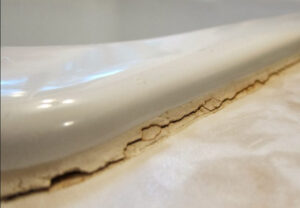
While this isn’t exactly a leak, water on the countertops need to be dried up as well. Even tile and granite countertops should not be left drenched in water. Aside from discoloration, water left on countertops can accelerate the wear of the caulking used around the sink and along the joint of the back-splash. Caulking should be replaced when you see it cracking, peeling, or pieces are missing. Without a good seal, your countertops might be fine, but water can start seeping through the caulk and cause water damage. Even if you can’t call it a leak, it is just as important to address as any in your sink, dishwasher, refrigerator, or any other appliance.
We hope you will never need our services, but if the unexpected happens, Relax, Trust Construemax.






